Conclave | The Screenplay Lab
How this contained world political thriller is also a sports movie
By Jeff Barker
The Screenplay Lab is a weekly podcast where we take one screenplay, break it down, and discover what is unique about the literary piece. I’m Jeff Barker, a screenwriter, and I am passionate about screenplays. This is a place where we appreciate their standalone beauty. This week, we do a deep dive into:
Conclave by Peter Straughan.
Conclave
Conclave is an intelligent “contained world” political thriller disguised as a religious drama that is part social commentary and part sports movie.
Screeeetch…. hear me out.
The film is well received with eight Academy Award nominations, including:
Best Actor - Ralph Fiennes
Best Supporting Actress - Isabella Rossellini
Best Original Score - Volker Bertelmann
Best Production Design - Davies/Sleiter
Best Costumes - Lisy Christl
and of course, what we care about the most… BEST ADAPTED SCREENPLAY - our guy (Peter Straughan)
It has already won at the Golden Globes (Best Screenplay), the British Academy (Best Film, Editing, Best Screenplay), and the AFI (Movie of the Year).
Peter Straughan
Peter Straughan (pronounced Strawn) is a 56-year-old British screenwriter and playwright. He was a touring bass musician before attending Newcastle University and studying writing.
He has a reputation as one of the go-to screenwriters to adapt historical fiction novels. Before Conclave, he was best known for Tinker Tailor Soldier Spy (2011). That film was nominated for an Academy Award and gained high praise as a strong/unique adaptation. He co-wrote that one with his late wife, Bridget O’Connor. She died in 2010 from breast cancer.
He adapted Dona Tartt’s The Goldfinch (one of my favorite novels) in 2019.
Development
Conclave is adapted from Robert Harris’ novel of the same name. Harris is a bestselling novelist known for writing historical fiction that leans heavily toward the fiction side (Enigma, Pompeii).
The Conclave novel is based loosely on the 2012 papal election (super loose… think “time to go shopping for new clothes loose”).
A friend connected Straughan with Harris, and he was able to read the first three chapters of the manuscript while Harris was still writing. He liked it and asked for more. A few months later, he received the entire manuscript.
Straughan says he knew he had something special because he couldn’t guess what would happen as he was reading. Also, he loved Lawrence’s (the main character) homily in the book. Specifically, Lawrence’s prayer for a new pope who would have doubts, admit his failures, and ask for forgiveness.
His team obtained the rights, and Straughan began adapting. During that time, he met with a cardinal and toured the Vatican.
An all-star cast was assembled, and replicas of the Sistine Chapel and Casa Santa Marta were constructed for the film. Production occurred over nine weeks in Rome (January-March 2023) with a $20 million budget (the film has made nearly $100 million).
FilmNation Entertainment – The King’s Speech, The Big Sick
Indian Paintbrush – The Grand Budapest Hotel
Access Entertainment – Danny Cohen’s company
House Productions – UK (The Zone of Interest, The Iron Claw)
Distributed by Focus Features in the US (Universal)
Logline
The official login of the screenplay is:
“When Cardinal Lawerence is tasked with leasing one of the world’s most secretive and ancient events, selecting a new Pope, he finds himself at the center of a conspiracy that could shake the very foundation of the Catholic Church.”
Here is my go at it:
A man with questions about his faith leads a secretive election to find the new Pope, only to uncover conspiracies that could shatter the Catholic Church.
Formatting, Mechanics, and Style
Character Tags
The writer opts to use last names for character tags. You must lock in when you first start reading because the action lines primarily include first names. Also, the characters often refer to each other by their first names.
Dialogue Columns
He uses two dialogue columns when indicating the language (other than English) spoken on the screen will be subtitled. This is a common way to execute this task, but not the only way. Here’s what it looks like on the page:
Parentheticals
He employs a heavy use of parentheticals in his writing, using them for emotion, clarification, language, and to add action (one less action line). There are three examples of how he uses parentheticals on this page:
(of the windows) Clarifying what Lawrence is speaking about.
(reading, slightly mystified) Reading in a quick action. Slightly mystified is an emotional cue.
(shouting over the racket) Emotional cue for the actor.
Underlining
Straughan uses underlining quite a bit in this screenplay (28 times). Every writer teaches us how to read their exact screenplay. Underlining is tricky since it can be used for many reasons (it’s just a tool - there is no right or wrong).
He uses underlining for two specific reasons in this script: to point out emotional impact and to draw attention to important clues.
Emotional Impact (16 times)
Important Clue (12 times)
Direction on the Page
It’s always essential to study direction on the page so that you can avoid silly debates and decide if (and how) you want to incorporate direction into your writing.
I place Straughan’s use on the moderate side.
WE (the people… I mean camera)
He places the reader in the position of the camera 21 times in this screenplay with “we see, we are.”
Shots
He uses specific camera angles as a description 31 times, including CLOSE ON, HOLD ON, FOCUS ON, and HIGH ANGLE.
The Writing
Back to the Well
Now we get to why this is a sports movie.1 When people view a film, they lose patience for seeing the same scene repeat itself again and again. That’s why if you keep going to a flashback, you better give me new information each time.
This screenplay has six similar scenes (going back to the well). They all include this:
cardinals vote
cardinals walk vote to table
cardinals pledge their vow
cardinals place the vote in a bowl
counting-cardinals count
threading-cardinals thread vote
counting-cardinals announce vote tally
fire-cardinals burn votes
But these scenes maintain their momentum, and we don’t get bored with them. Why? Because it’s a little sacrifice for the big payoff… the score. We read about the maneuvering and manipulation between games (voting sessions), and we MUST learn what all that backstabbing was worth.
Bottom of the 5th, what’s the score now?
I have some clips of what this looks like on the screen in my video podcast.
Fleshed Out Storylines
This story has no shortage of loose strings and roadblocks. Straughan has said in interviews that he usually writes his first draft as close to the novel as possible and then sculpts it from there. That being said, Conclave is very close to the novel, as far as film adaptations go.
We are faced with:
A missing report
Reemerging sexual scandal
Mystery person
Terrorism
Social maneuvering (nuns vs. priests)
Political gamesmanship
Six priests engage in a game of human chess to get the blessing of taking on the “burden” of being Pope. You could set these archetypes in a different setting, like a wild-west saloon or an elementary playground, and have any number of interesting stories.
The corrupt character - Trembly
The Tyrannical character - Tedesco
The Abusive character - Adeyemi
The Reluctant character - Lawrence
The Manipulative character - Bellini
The Mystery character - Benitez
Dramatic Storytelling
The author of this screenplay delivers the drama the readers (and eventually viewers) deserve with some experienced techniques.
Lawrence receives news of the major plot twist about the newly elected Pope from his trusted secretary O’Malley (a minor support character).
Many writers would have taken the path of least resistance and allowed the reader to gain that information along with Lawrence, thinking this would set up potential friction with an impending conflict between Lawrence and the new Pope. It is a quick and easy gain.
However, Straughan gives us a pro move by hiding the information from the reader and allowing the emotional weight of the story’s central plot twist to be revealed between the two principal characters at the heart of the conflict.
We get to see Lawrence’s humanity and empathy, as well as the Pope’s courage.
Specificity
Straughan uses specific details to bring the story to life. Being vague and broad often puts a screenplay at risk of being bland and forgettable. That is not the case here. We are loaded with enough details to paint a vivid picture but not too much as to slow the story down.
Here is a good example of how the writer describes the votes being burned to deliver the papal smoke:
Nuanced Storytelling vs. Interiority
Straughan opts for a great deal of interiority with his writing. This is a style I haven’t seen a lot of in Oscar-nominated screenplays. His action lines often read like prose and tell us precisely what the characters think and feel.
He uses phrases like:
he feels
in his mind
he believes
he wonders
he’s thinking about
he remembers
I found at least thirty-three instances of this in the script. Here are three examples:
Focus on Humanity
One hundred-eight men are one step away from being Pope (or, as the screenplay puts it - the most famous man in the world). Despite their elevated status, Straughan works hard to make the reader see the humanity of these men.
Many of them are frail and in poor physical health. They are petty and overly proud. They drink wine all day, and many of them smoke. They even question their faith.
Lawrence has lost his ability to pray, and Bellini reports that the dead Pope lost his faith in the Catholic Church.
Sense of Setting
There is a strong sense of place and identity in this screenplay. The primary set pieces (Sistine Chapel and the Vatican) are iconic.
There is a lot of talk about dimply lit interiors, shadows, long hallways, and secret hideouts.
This gives the reader a feeling of dread and corruption but is also set firmly in a location the reader can easily imagine.
Humor
The writer finds a way to break the tension with clever humor here. It is somewhat elevated but easy to feel on the page. It also transfers well onto the screen. My favorite is when Trembley (the Canadian cardinal) explains to the group why they need to release a statement about the Pope’s death.
Unsurprisingly, this screenplay has some outstanding dialogue, which most likely put it over the top for a screenplay Oscar nod. The top moment for me is on page 61-62 between Lawrence and Bellini.
Symbolism and Imagery
There is plenty of symbolism and imagery in Straughan’s writing. Some of it comes from Harris’ novel.
Windows
The opening scene takes place in Lawrene’s room. He looks out his window as it cracks, just before he gets the phone call to alert him that the Pope has died. This gives us two things.
We get our first glimpse of how our main character sees everything through a spiritual mystery. Is the Holy Spirit speaking to him?
What we don’t yet realize is that this is foreshadowing for the major plot twist to come at the end of the screenplay. The selection of the new Pope will certainly break a glass ceiling.
Windows are mentioned 20 times in the script.
Turtles
They are slow and deliberate, like the process of electing a Pope. We read that the turtles live in a Vatican fountain - a gift for the previous Pope. The new Pope is especially interested in them since they carry around their homes wherever they go, just like he does.
Turtles are persistent and determined to get where they are going - can’t stop progress, even in slow motion.
Chess
This is the easiest one. Bellini asks to take the Pope’s chest board since they regularly played together - simple enough… an emotional memento. The chess board symbolizes the strategic game they are all playing to try and become the next Pope.
Narrative Elements
I have quite a bit to share about narrative styles, tones, themes, conflicts, and story structure, but I’ve run out of room. If you’re interested, you’ll have to visit the podcast. It’s available on YouTube and in audio form (Spotify, Apple, Amazon, iHeart, etc).
While you’re there, please take a look at some of my other screenplay breakdowns.
A Complete Unkown, A Real Pain, Anora, The Substance, Nosferatu, Heretic. We’re just getting started.
If Conclave was a sport, which one would it be? (wrong answers only)



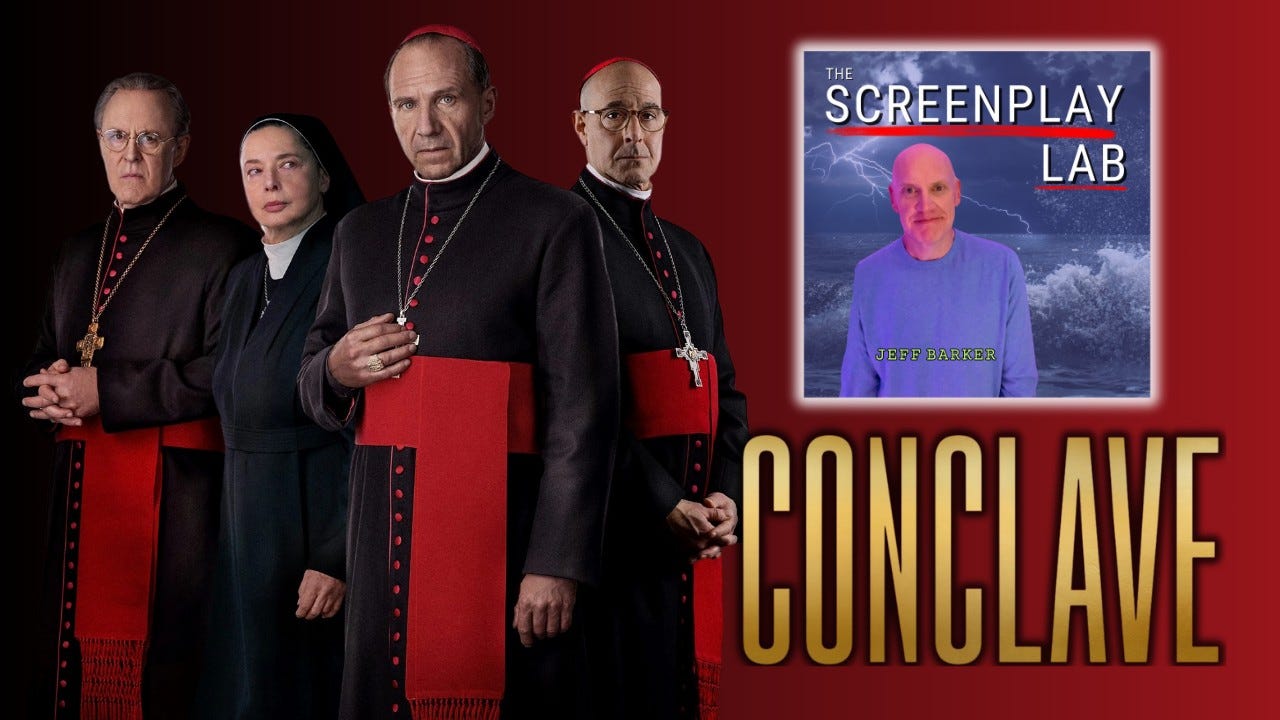

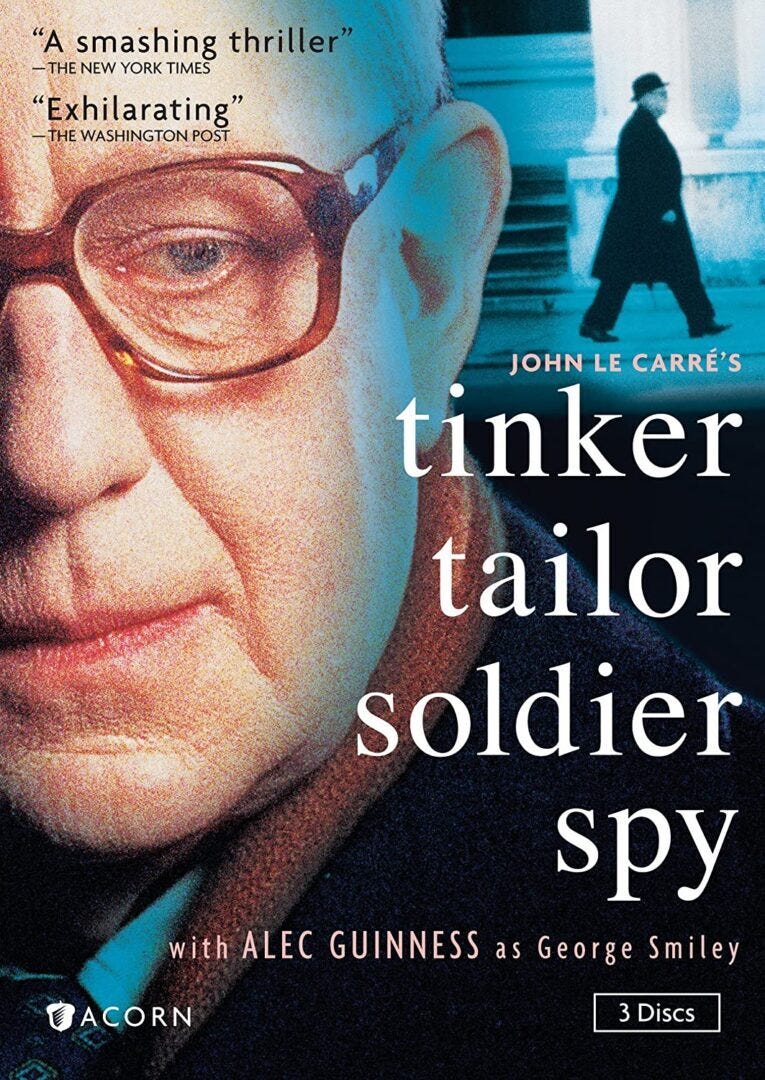











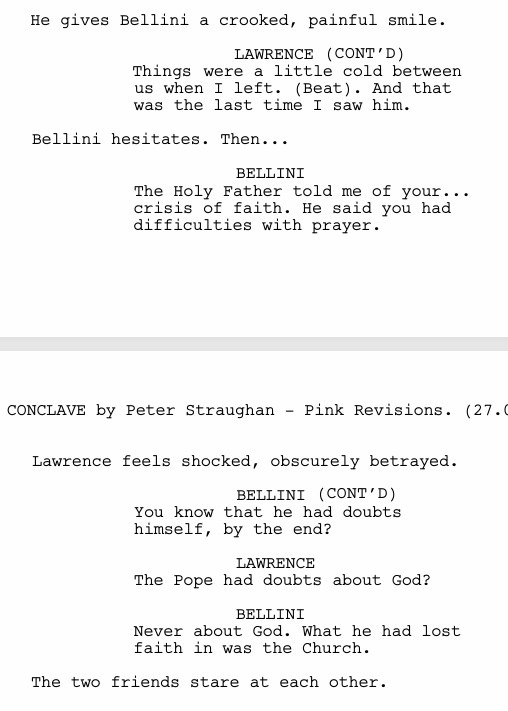

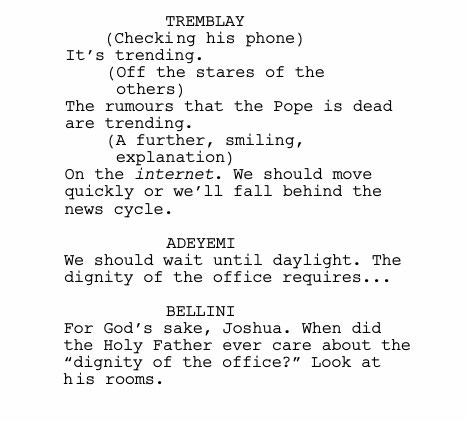
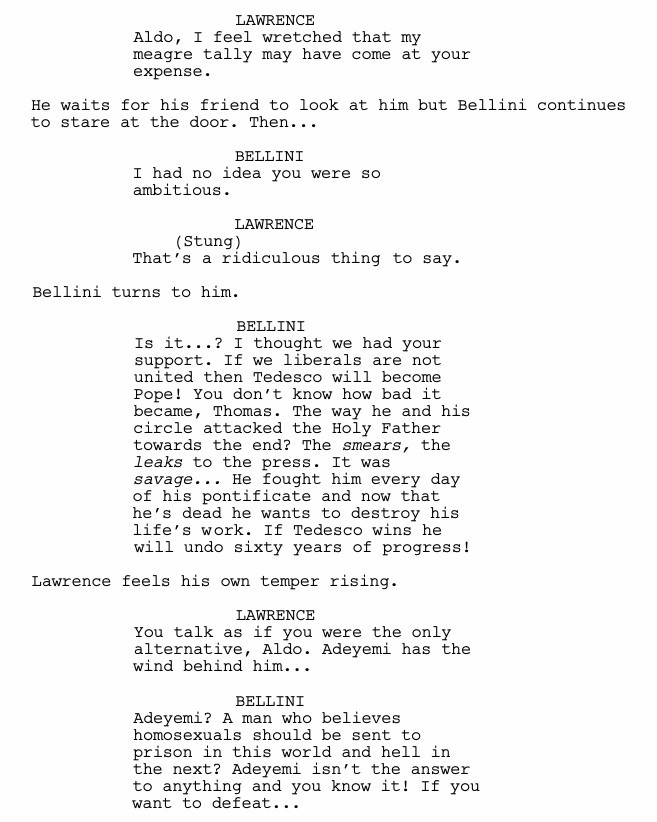
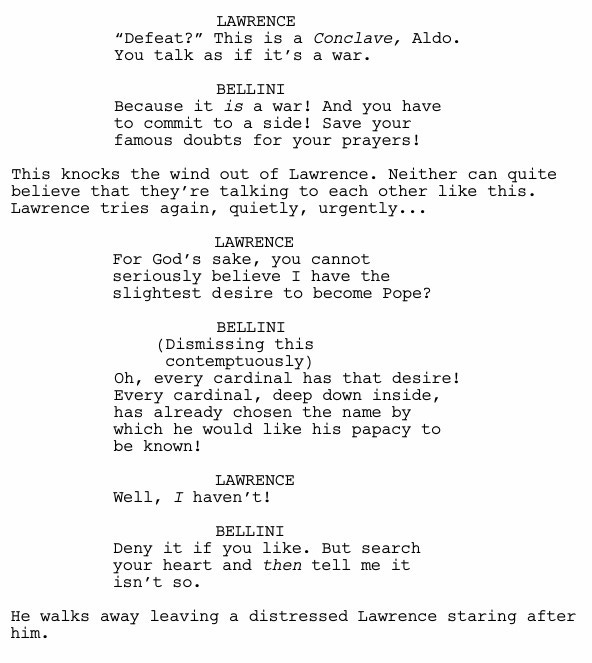
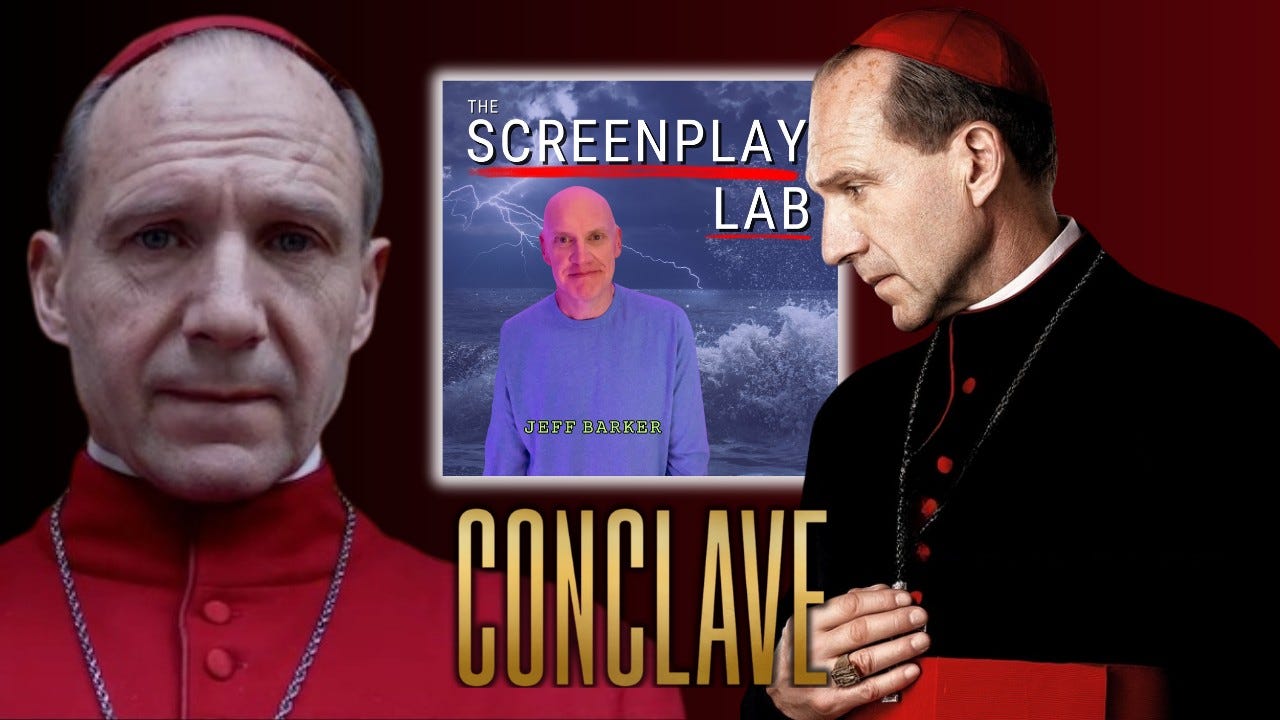
I can no idea that the “Conclave” screenwriter also co-wrote “Tinker Tailor Soldier Spy” - It explains a lot. I loved that film and it still holds at my top 21st Century spy film adaptations. Gary Oldman, as George Smiley, in a very different character from his spook in “Slow Horses” proves he’s the GOAT as Brit spies go in the modern age. How cool. Loving your Substack. I’m such a geek for this level of detail on screenplays!
Great way to direct on the page, when I do a storyboard I always leave clues like this so that in the visual exposition it is easier to decipher the line of sight for the camera.